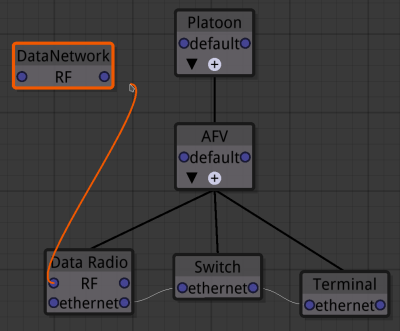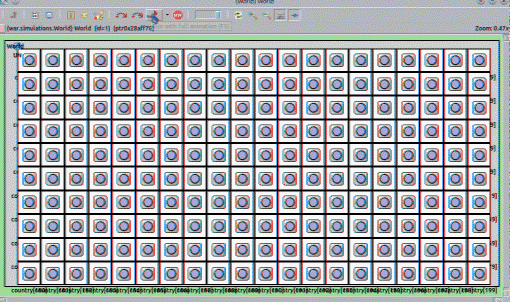Providing a Tactical Domain For an Independent Nations Task Force
Abstract
Any independent sovereign nation will wish to ensure that their land forces are equipped to protect that nations interests. Technology for Command, Control, Communications, Computers, & Intelligence (C4I) systems is advancing rapidly and even smaller nations must keep up. This paper looks at the types of considerations when planning and equipping a task force from the soldier platform to the upper tactical echelon. The paper will consider some of the key technology enablers that can deliver operational benefit. An architectural approach is given that will allow the right equipment to be used depending on the situation. This approach is demonstrated by 4 example architectures for different military scenarios. An acquisition approach will be proposed to ensure freedom, flexibility and value for money. Interoperability and other not material development areas will be considered.
Read more: Providing a Tactical Domain For an Independent Nations Task Force
Tactical Network Modeller Simulation Tool
This is a web version of a paper which will be presented at MILCOM 2015 and published in the proceedings. The PDF version is available here http://arxiv.org/abs/1508.05830
IEEE Copyright Notice
Copyright (c) 2015 IEEE
Personal use of this material is permitted. Permission from IEEE must be obtained for all other uses, in any current or future media, including reprinting/republishing this material for advertising or promotional purposes, creating new collective works, for resale or redistribution to servers or lists, or reuse of any copyrighted component of this work in other works.
I. Introduction
Simulation and Modelling are important components in the planning and deployment of military systems. In the Command, Control, Communications, Computers, and Intelligence (C4I) space the complexity of heterogeneous systems that are deployed can have unpredictable outcomes. Planners use their experience to build C4 architectures but do not have an easy way to validate them. Simulation can be used to improve doctrine and processes generally and for specific operations adapt the architecture to fit the environment.
Modelling is often used during the design and implementation of new systems. It can be used as a testbed to provide a detailed simulation during system evaluation[1]. Where simulation is used to look at scenarios a generic approach is often used with networks generated by algorithms such as “Small-World” which is not representative of military networks[2].
Neither technique are commonly used as a tool for pre-deployment nor on-deployment network planning at the tactical level. Modelling and Simulation is a specialist area and requires personnel trained in specific tools and techniques.
This paper presents a novel custom designed tool called Tactical Network Modeller to readily allow the modelling of a tactical network and its interconnections. This model can be built visually with very basic training. This model can be used to simulate the environment with different back-ends. This enables generic scenario investigation allowing planning decisions to be made. A different back-end allows the full network stack to be emulated so that actual software and protocols can be investigated.
OMNeT++
In this article I will look at OMNeT++ which describes itself:
"OMNeT++ is an extensible, modular, component-based C++ simulation library and framework, primarily for building network simulators. "Network" is meant in a broader sense that includes wired and wireless communication networks, on-chip networks, queueing networks, and so on. Domain-specific functionality such as support for sensor networks, wireless ad-hoc networks, Internet protocols, performance modeling, photonic networks, etc., is provided by model frameworks, developed as independent projects. OMNeT++ offers an Eclipse-based IDE, a graphical runtime environment, and a host of other tools. There are extensions for real-time simulation, network emulation, alternative programming languages (Java, C#), database integration, SystemC integration, and several other functions."
I discovered it when searching for Network simulation tools in the sense of TCP/IP etc. OMNeT++ can be used for this purpose but is a much more general tool. It is a discrete event simulator and can be used to model many different scenarios. Whilst I did not set out to use a tool in this way, it has become obvious that it would be very helpful. I plan to develop a new network protocol as part of my academic studies. When coming up with the algorithm which implements it then it would make sense to first do it in an abstracted environment. Once it is proven there then I can begin to layer on the real world network stack.
To that end in this article I will be looking at OMNeT++ as a generic modelling tool. I will not therefore be applying the criteria I assigned in my previous article Evaluating Network Simulation Tools. I will come to this in a follow up article where I look at OMNeT++ in combination with INET which I hope will cover my network simulation needs.
Docker on Core 4.7
In this article I will cover how we get the power of Docker to combine with the simulated network of CORE. I assume that you are familiar with CORE if not read the docs.
I have written about CORE before here Common Open Research Emulator (CORE). It is an excellent tool for network modelling. I intend to use it for a Doctoral project which will be testing a new protocol in harsh conditions. I wanted an easy way to wrap and deploy my software and have been looking in to Docker. It is quite like Virtual Machines but more lightweight. It allows containers to be produced that give a fixed infrastructure and can be moved between machines easily. It occurred to me that this could be helpful to deploy on nodes of a CORE simulation.
First you need to install Docker on your host machine. Instructions are here https://docs.docker.com/installation/#installation
Once you are up and running you should familiarise yourself with Docker through the excellent documentation. The tutorial is also a good place to get a quick overview and should be enough for you to follow on here.
GNS3
This will be a quite short article. I am continuing my look at suitable tools to help me simulate and model dynamic and distributed MANET. I discussed an outline of my requirements in this article Evaluating Network Simulation Tools.
I have so far looked at Common Open Research Emulator (CORE) and found a very promising tool for my research purposes. My next stop is the Graphic Network Simulator (GNS3). This is an open source program (GPL) that can simulate complex networks. It has a graphical interface and is cross platform including Windows, Linux and Mac. The latest version was available in the software centre of my Ubuntu 14.04 system so installation was a simple point and click.
It quickly became clear though that this tool was not at all suited to my needs.






